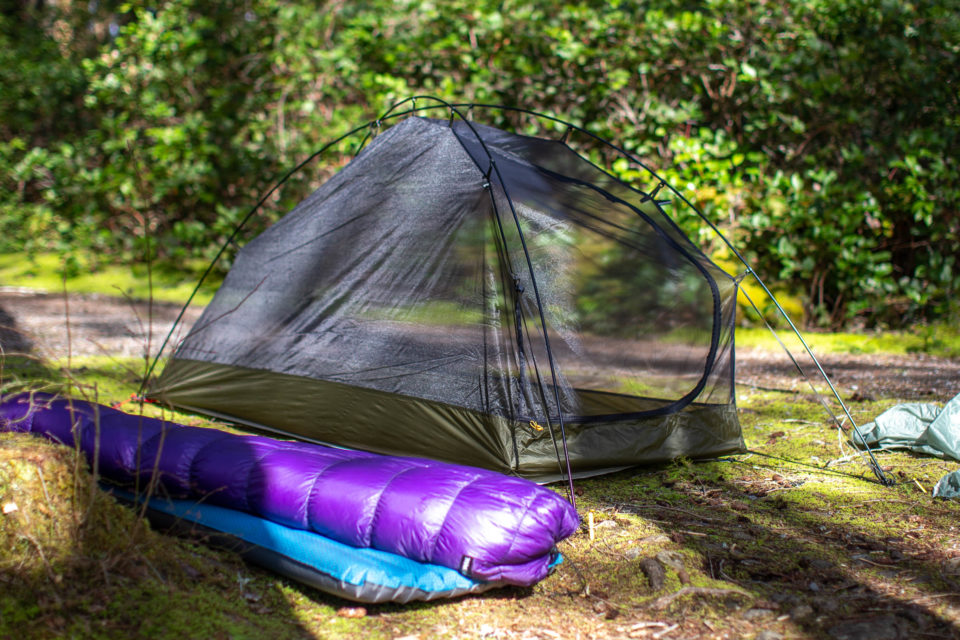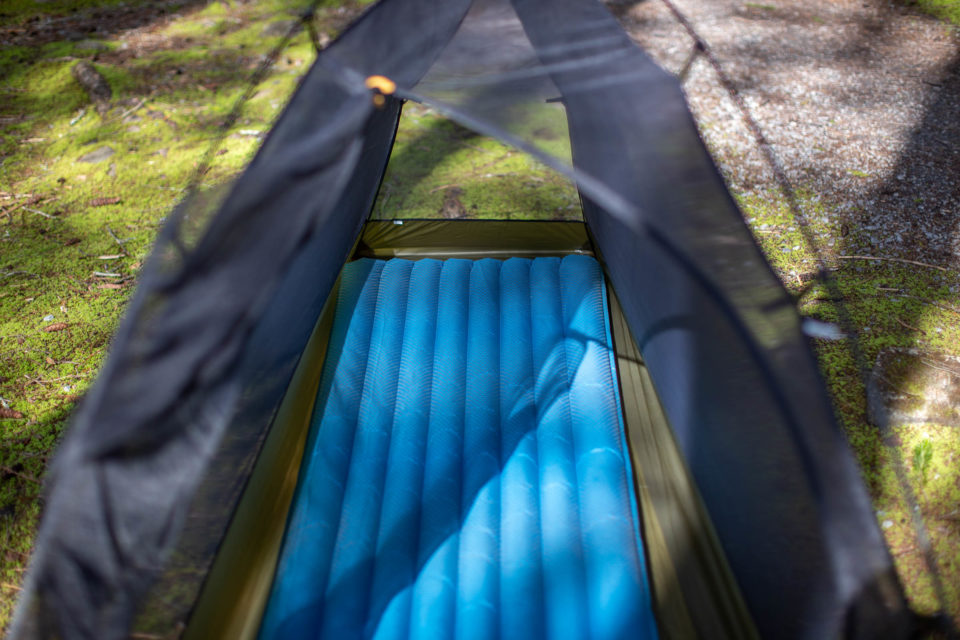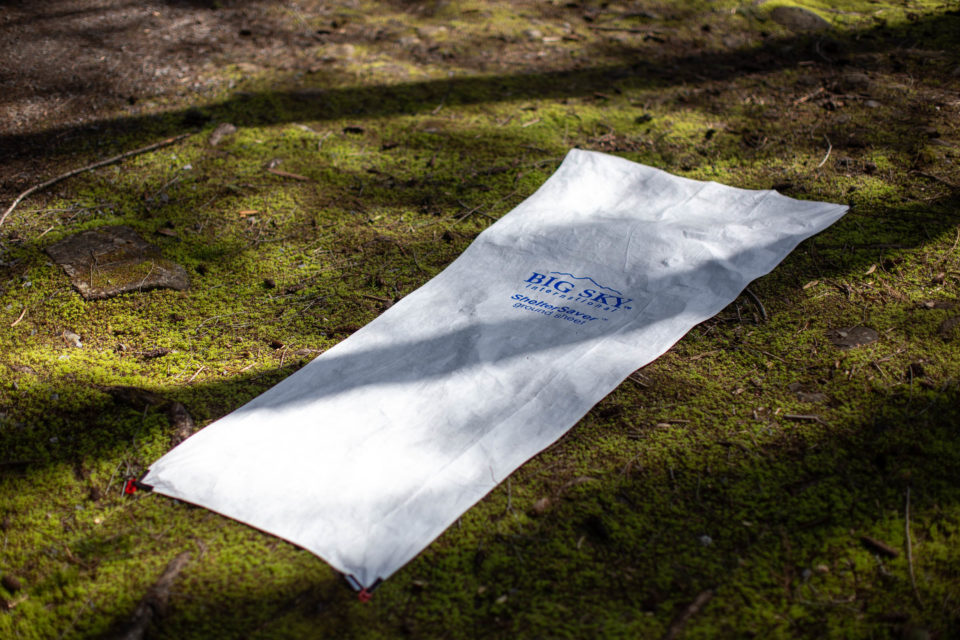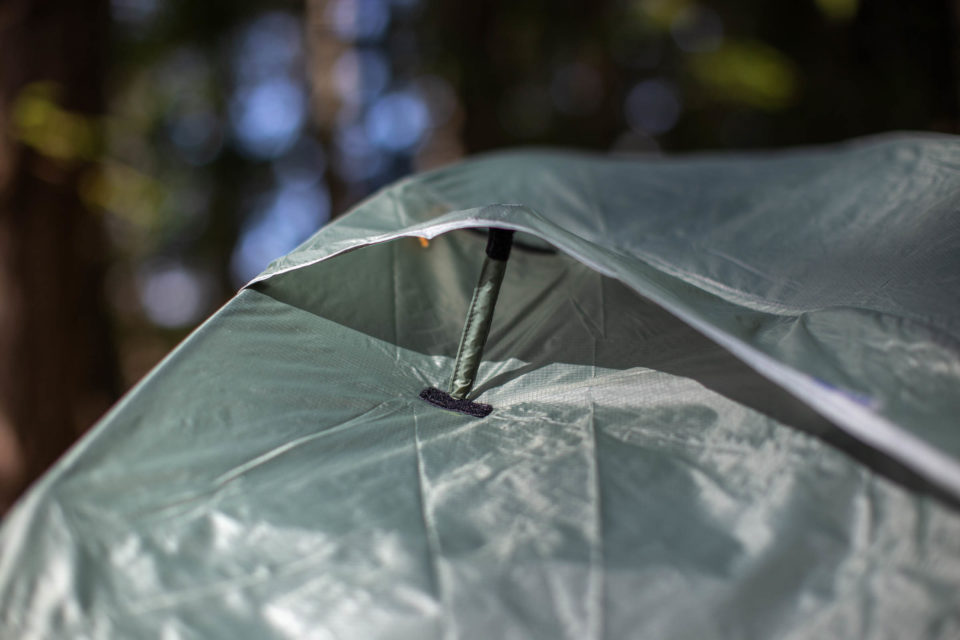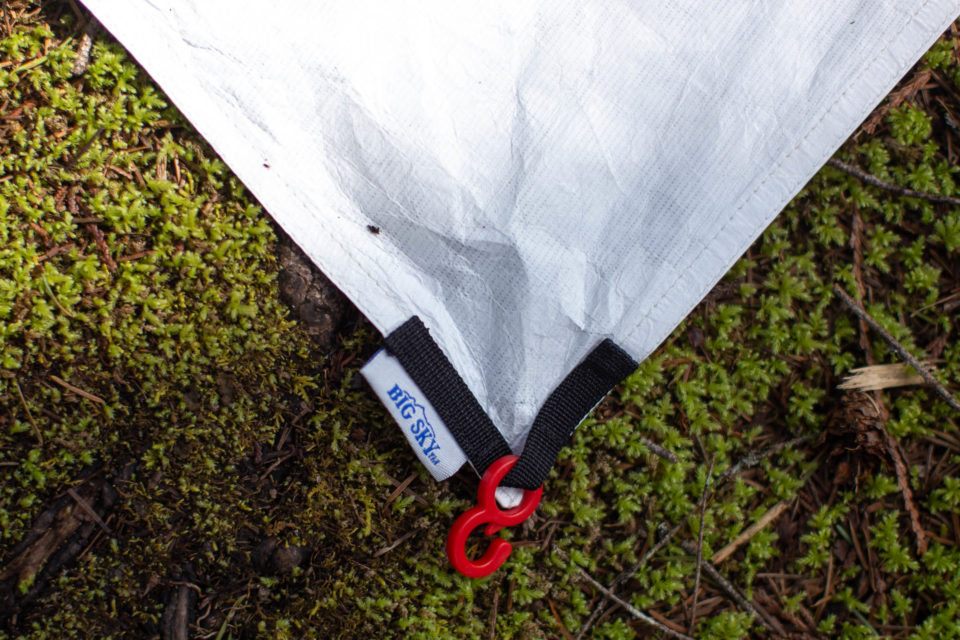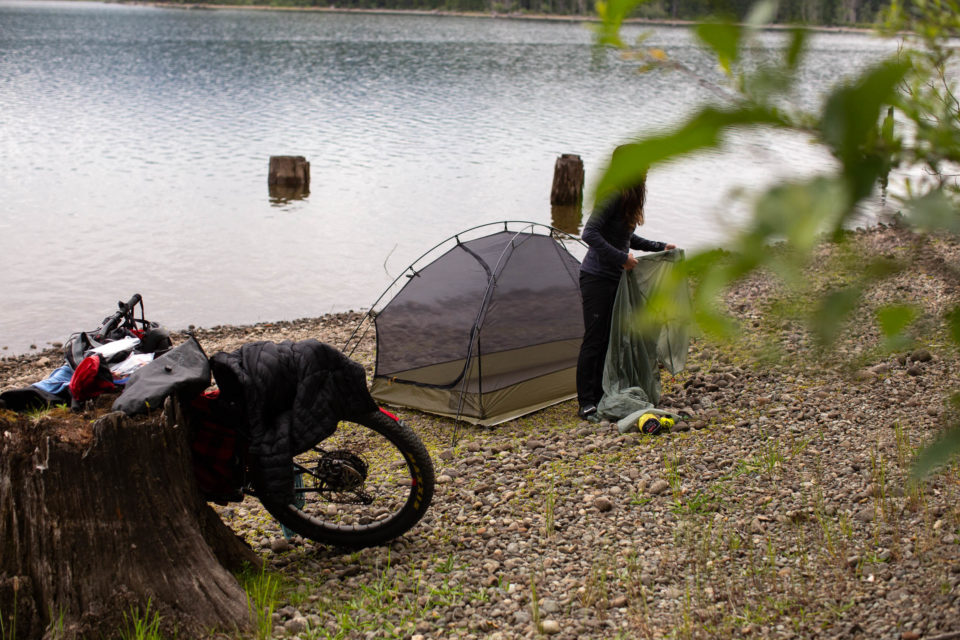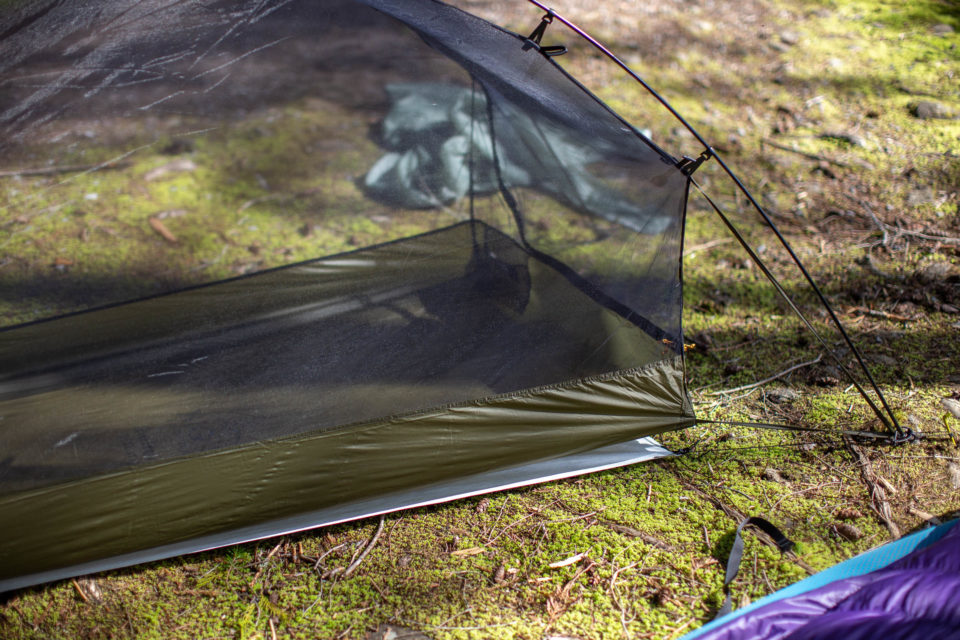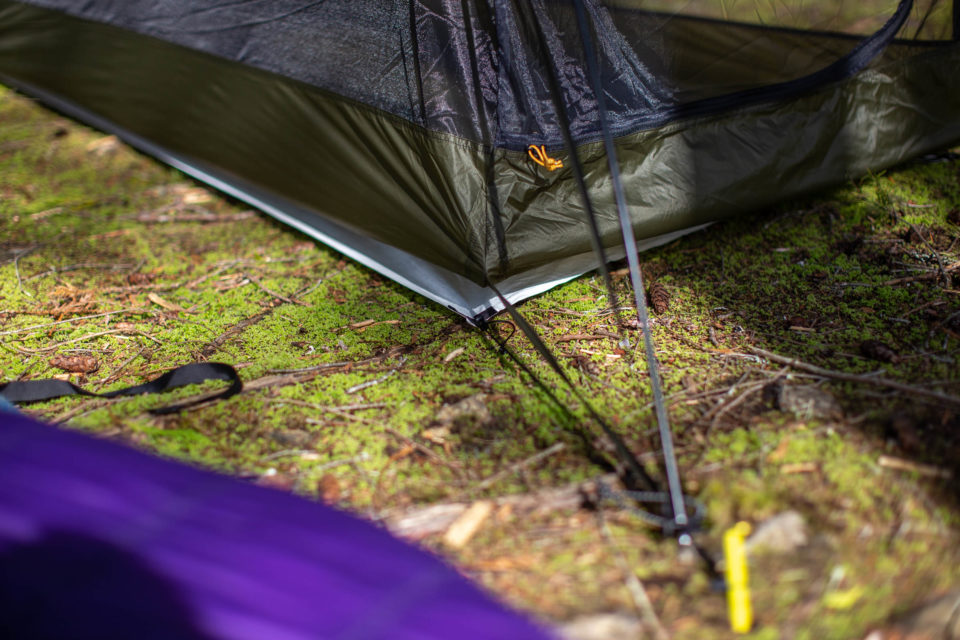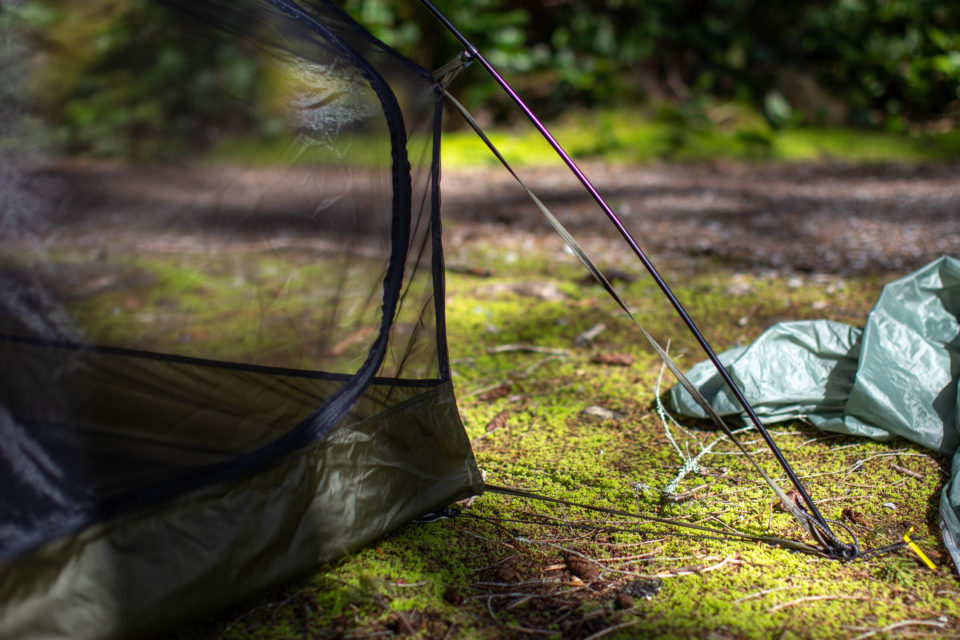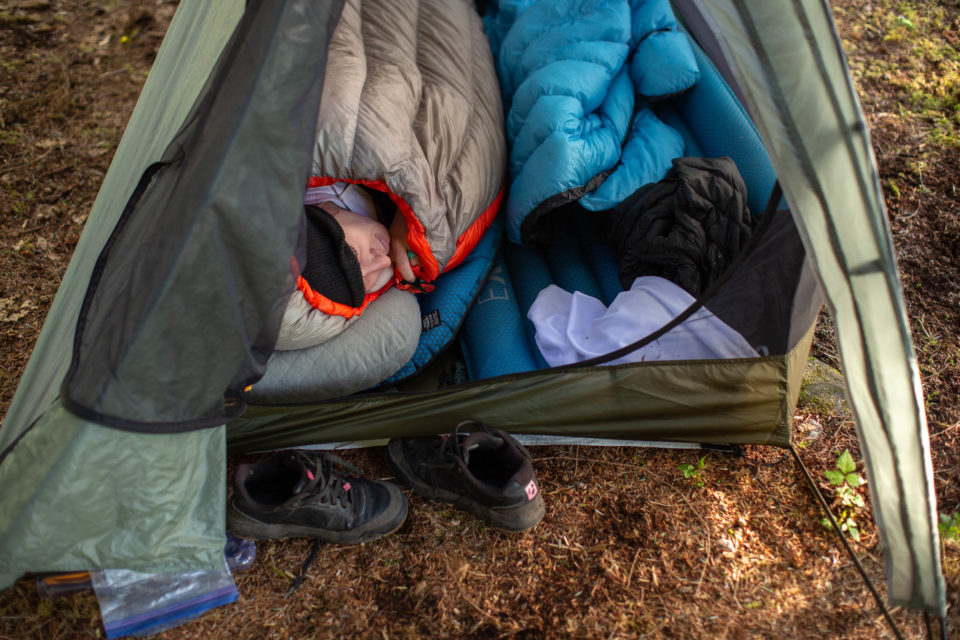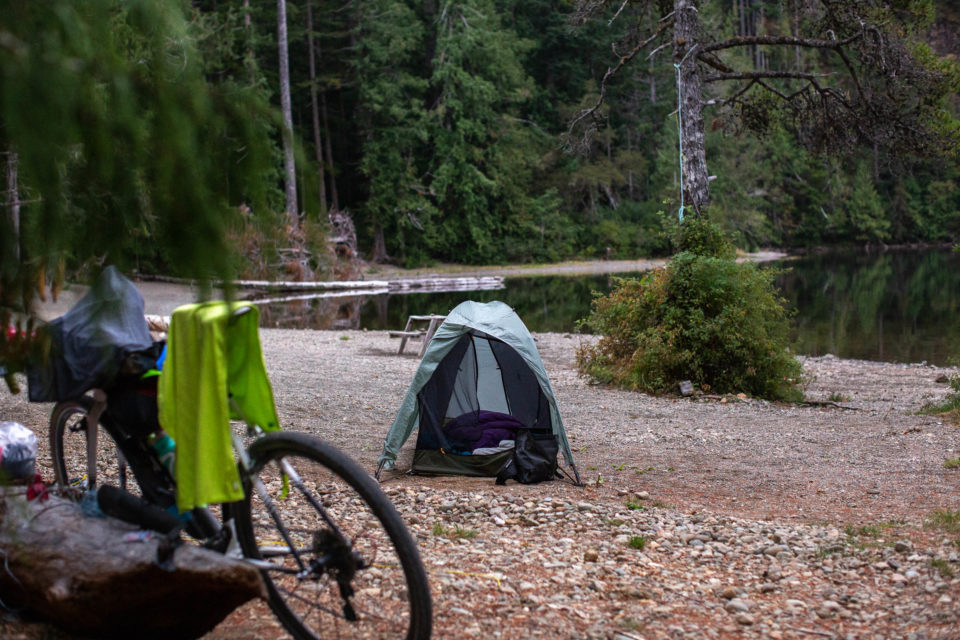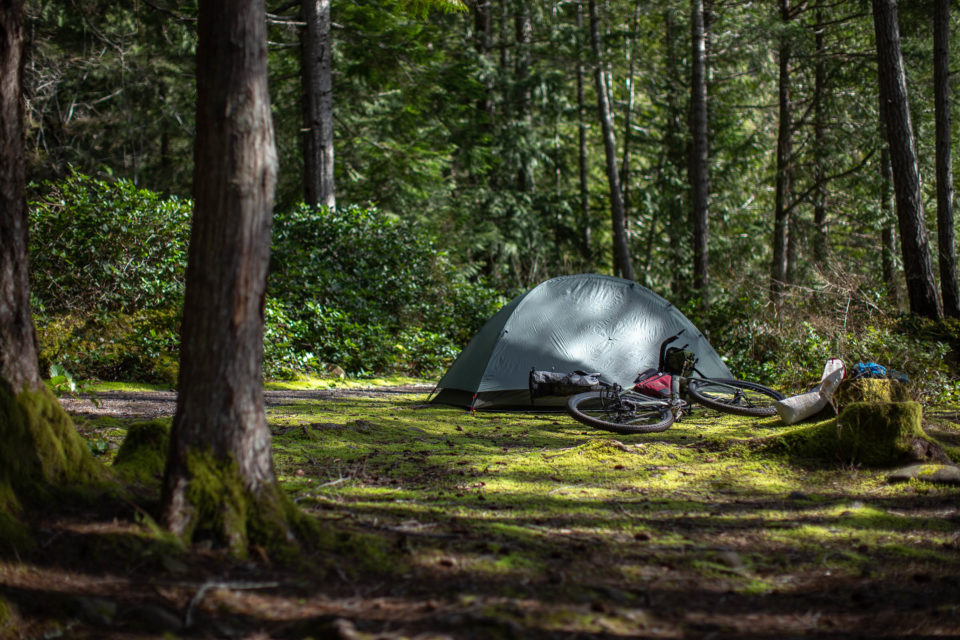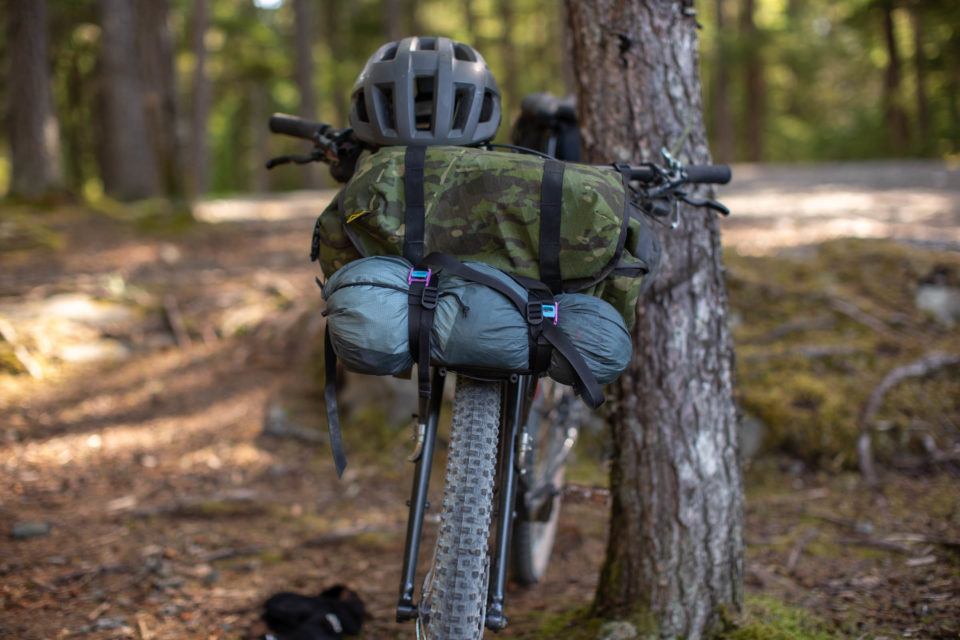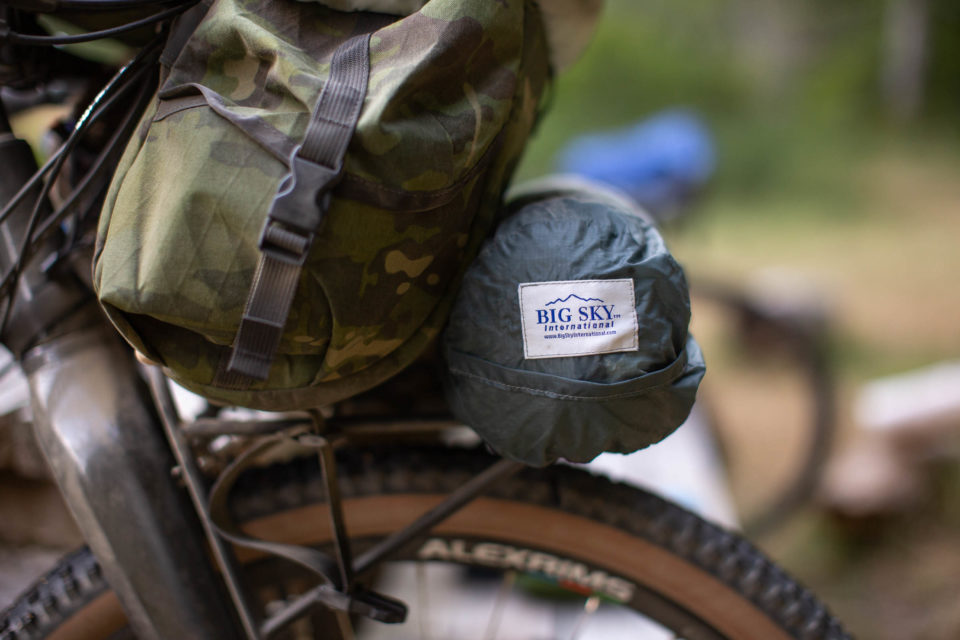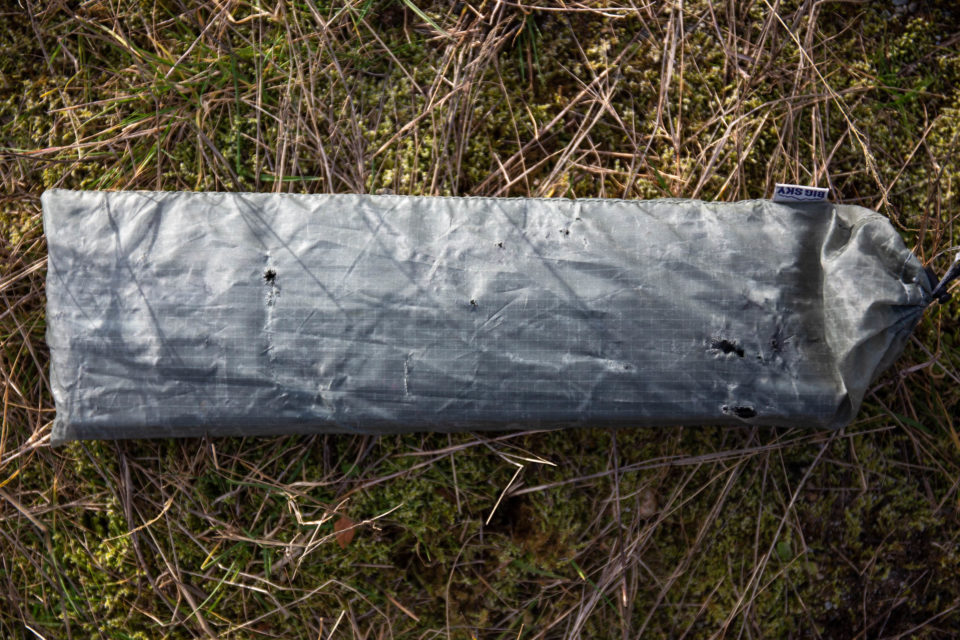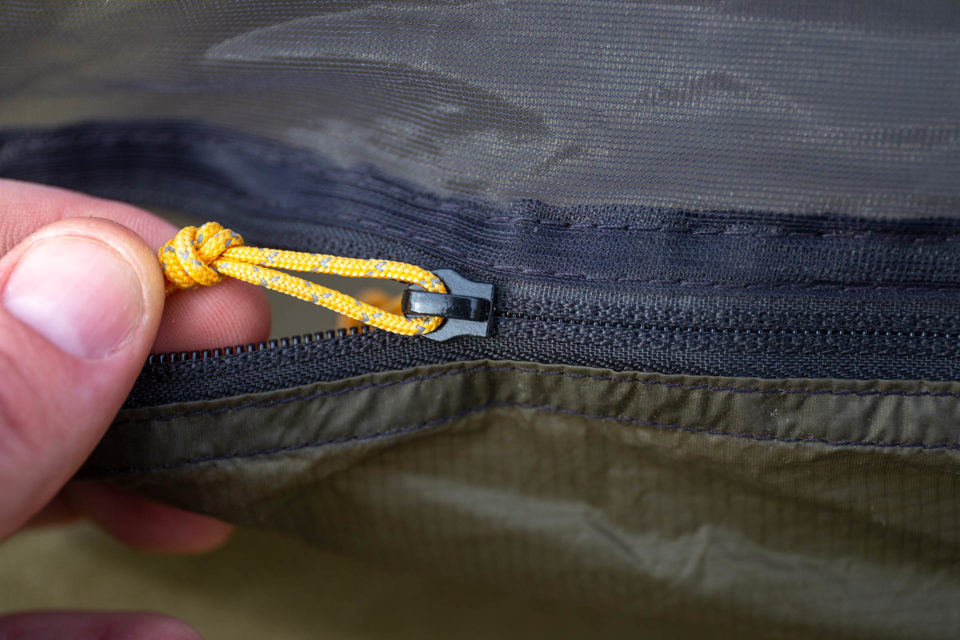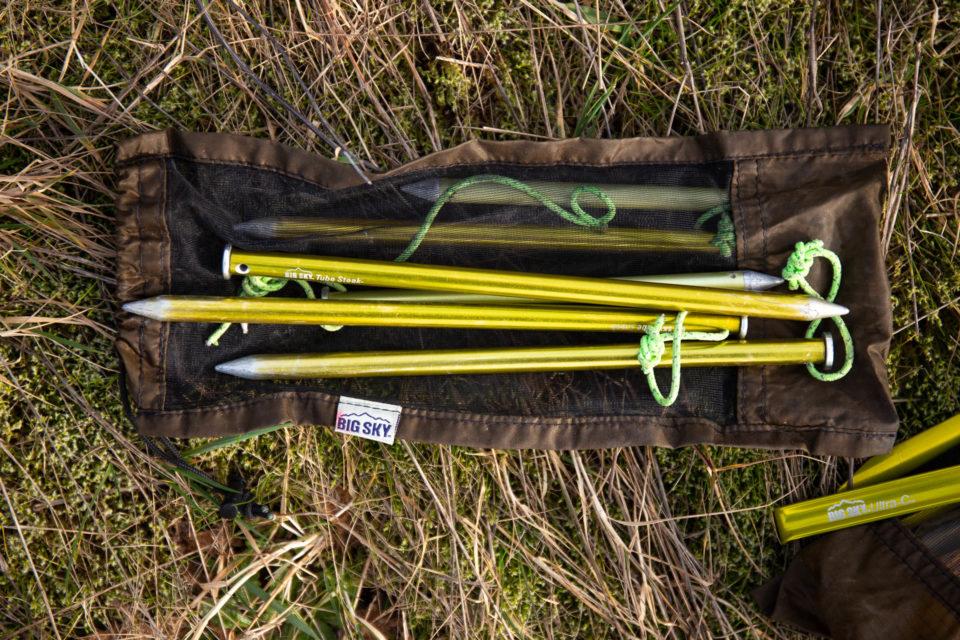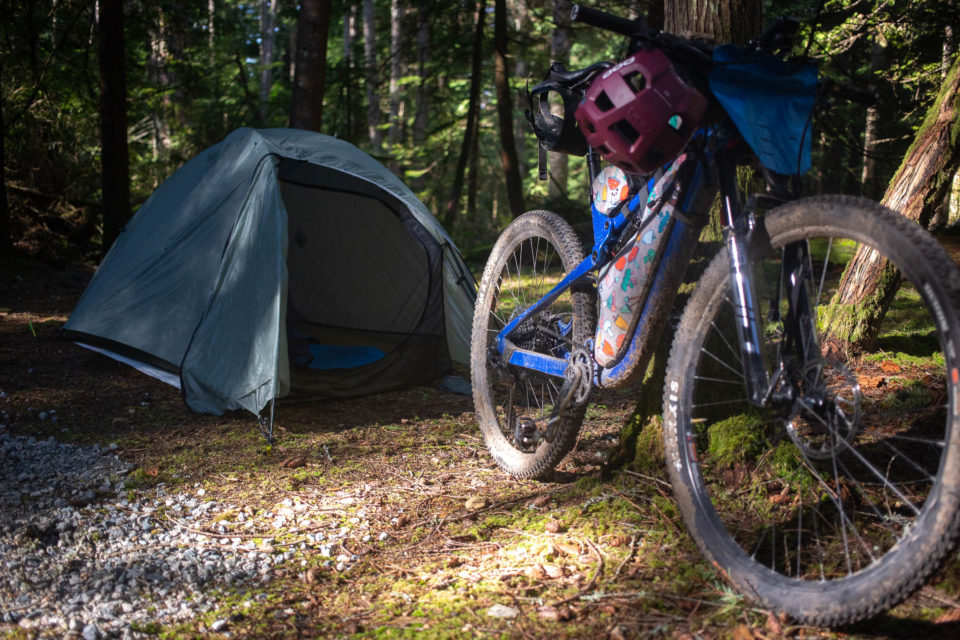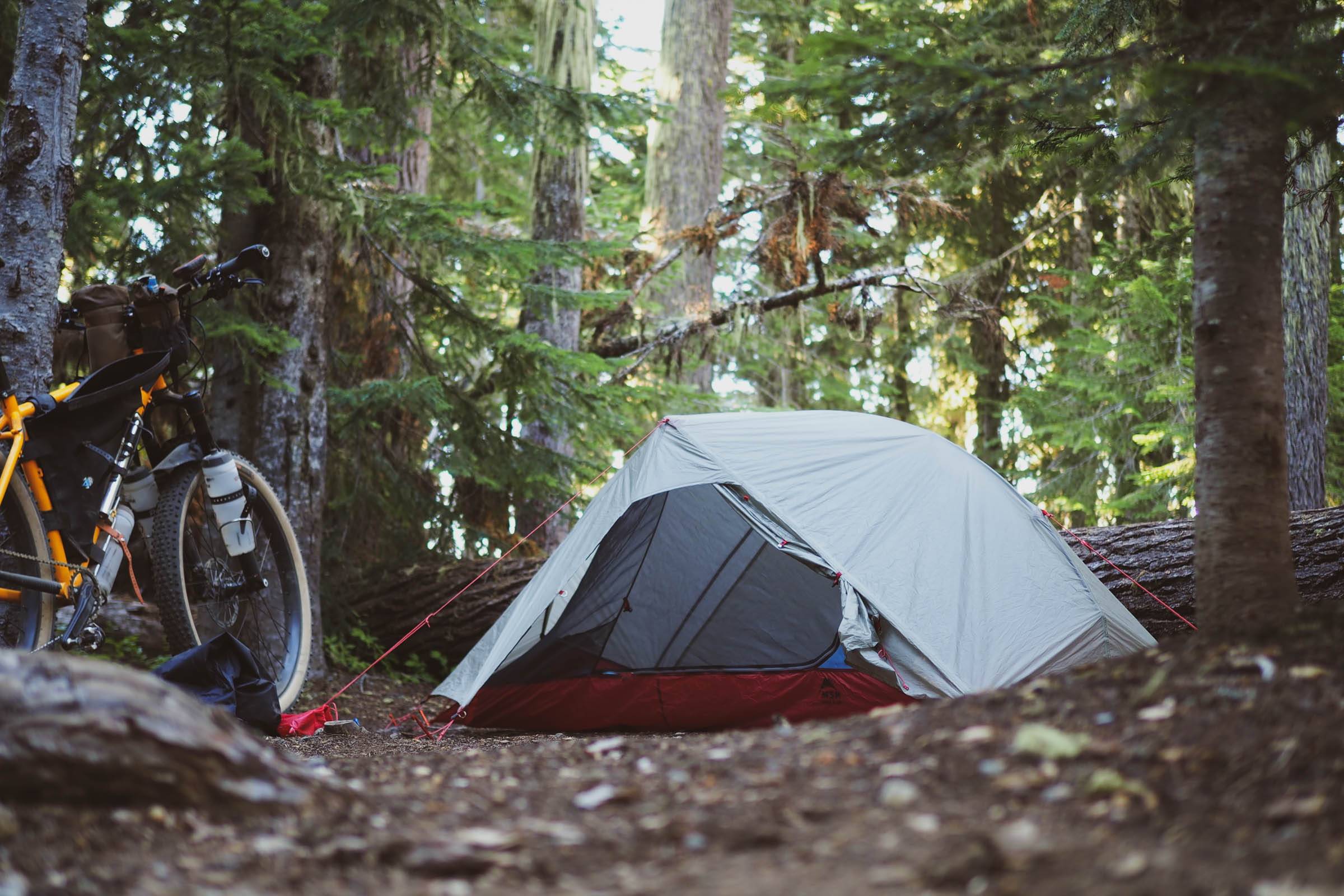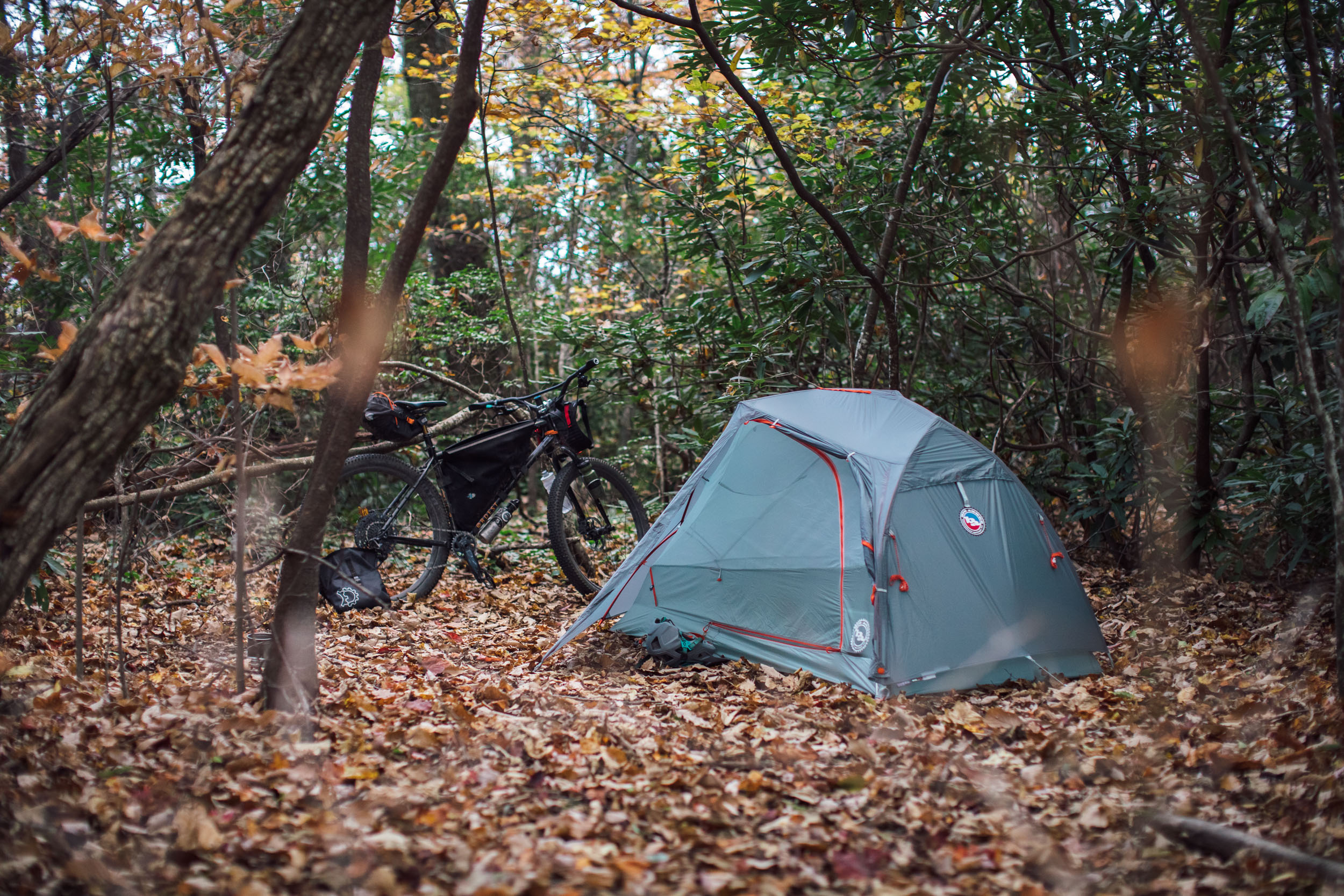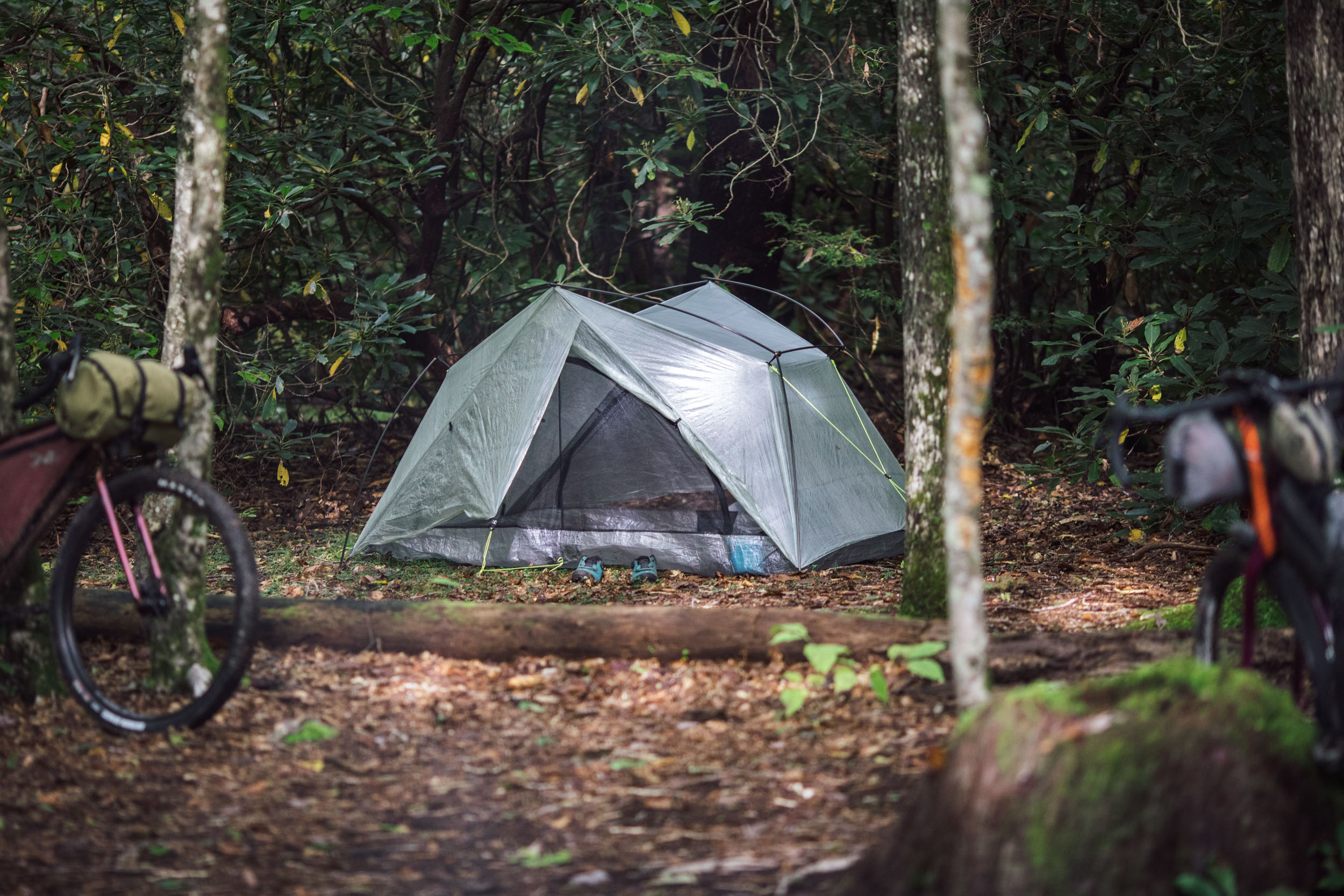Big Sky International Soul 1P Tent Long-Term Review
Share This
The 2.3-pound, freestanding Big Sky International Soul 1P tent checks a lot of boxes for the weight-conscious bikepacker. We’ve been testing the bikepacking version for nearly a year to see how it holds up in a wide range of conditions. Find our long-term review here…
If there’s one thing I’ve learned from my years of camping, it’s that a good night’s sleep is well worth the weight of a proper sleep system. I’ve spent far too many nights huddled with my knees against my chest and my face buried inside my sleeping bag to skimp on certain creature comforts. For me, this means a proper sleeping pad (preferably long/wide), a sleeping bag rated for temperatures cooler than I’m expecting, and if I had it my way, I’d always use a freestanding, double-walled tent.
I can’t imagine I’m the only one who’d prefer not to faff about at camp with multiple guy lines, tons of stakes, and other complexities when setting up my tent. These days, it seems the prerequisite for an ultralight tent is a master’s degree in geometry and the ability to control the weather. Thankfully, there’s hope for those of us who prefer the simplicity of a good ol’ fashioned freestanding tent. The days of camping in my youth, when setting up a tent meant missing stakes and broken poles, are alive and well, as some brands continue to offer classic and useful designs from yesteryear.

Oddly enough, finding a lightweight and packable freestanding shelter suitable for bikepacking isn’t as easy as one might expect. There are loads of semi-freestanding tents and trekking-pole-style pyramid shelters that claim to be the “lightest yet,” some of which we’ve shared news of or reviewed here on the site, but that’s not where my heart lies. I’m not exactly sure how I stumbled upon Big Sky International, but their lineup of tents caught my attention for their bikepacking prowess. The best part? The majority of them are freestanding!
Big Sky International’s headquarters is based out of Jackson, Wyoming, and once upon a time they used to manufacture their tents in the US as well. Today, Big Sky’s products are made in South Korea—a change that increased their costs by 10-20% but has allowed them to improve the overall quality of the lineup. They have warehouses in the USA, UK, and Asia, so getting their products shouldn’t be much of a problem, no matter where you live. Their team was quick to recommend the Soul 1P tent for a review, as it’s one of the most affordable freestanding, double-wall tents and is offered in a “bikepacking” version with shorter pole segments that fold down to just 12″ long, compared to the 17″ segments on the standard “ultralight” version.
Around a year ago, I was sent the Soul 1P bikepacking tent, an optional Tyvek-style groundsheet, a stake/peg kit, and their guy line kit with Tube Steak pegs. Everything except the tent, fly, tent poles, and stuff sack are add-ons, so most people will end up needing to purchase a groundsheet and at least one set of pegs. I’ve used the tent on a number of sizeable bikepacking trips, including almost two weeks scouting the Tree to Sea Loop on Vancouver Island, the recently published Queen’s Ransom route in Arizona, the Snowden or Dust route, and a handful of shorter trips in between. I’ve slept in light snow, rain, wind, and the tent has been tested in a range of climates.
Construction and Setup
The Big Sky Soul 1P is a freestanding, double-wall tent that features a single doorway, minimal vestibule, and two lightweight aluminum pole segments. It has a full mesh body with a PU-coated/seam taped nylon bathtub floor. The 6″ tall bathtub floor measures 85″ (215cm) long by 36″ (92cm) wide at the head and tapers to 24″ (60cm) at the foot. Big Sky states the length provides enough room for someone 6’1″ tall while leaving an extra 6″ (15cm) at the head and foot ends for sleeping bag loft. The fly is constructed from Big Sky’s proprietary SuperSil-UL nylon fabric, coated on both sides with silicone. According to Big Sky, the fabric is about two times stronger than similar fabrics that use a polyurethane (PU) coating, and just as durable as generic silnylon, but weighs less.
The Soul 1P is set up like pretty much any other freestanding tent with an X-shaped pole architecture. After assembling the poles, I would normally insert the ends into the four grommets on each corner of the tent, letting them lie on the ground. While supporting both poles with one hand from the side of the tent, I would use my free hand to attach the 12 pole clips. The foot end of the fly has plastic red snap-on hooks that match up with corresponding clips on the tent. The fly clips at the head of the tent are attached to the body via a small section of stretchy shock cord, which makes for a taught setup every time. The groundsheet attaches to the body using the same plastic hooks—fixed at the foot end and finished with sliding cord tensioners at the head end to tighten things up. The groundsheet is just big enough, with almost no excess fabric.
I was happy to be able to fit my long/wide Exped AirMat UL inside with some extra room on the side toward the door. Most nights I would bring in some of my riding clothing and my camera and stash them beside my pad. I’ve also used the tent with a tapered sleeping pad, which leaves plenty of room on either side of the pad for clothing and gear and is especially nice when the weather turns. In a pinch, and this is not recommended, Emily and I have proven that there is room for two adults when one decides hammocks aren’t for them (photographic proof below). There’s one small mesh interior pocket just below the door, but I don’t think I ever used it and would have preferred to see a small pocket on the side for easier access. If I had it my way, there would also be an interior pocket or headlamp diffuser at the peak, although there are two small fabric tabs that could be used to string up a small clothesline to hang gear from.
Condensation and Airflow
How efficiently fresh air can flow through a tent is crucial for camping in wet or humid areas. Thankfully, the majority of my testing was here in the Pacific Northwest, and I’ve spent a good deal of time in less-than-ideal conditions. With the fly installed, the Soul 1P tent has a few options for increasing ventilation: the main entrance, a small vent with a strut above the door, and the space around the bottom of the fly. On warm nights, condensation wasn’t an issue because I could leave the front door open and fly pegged out. On cooler, more humid nights, closing the main door and zipping the fly shut restricted airflow. The small vent above the entrance isn’t big and I can’t imagine it does a whole lot. In these conditions, staking out the tent becomes even more important.
While the Soul is a true freestanding tent and I’ve spent many nights with my stakes stashed away in their little pouch, they’re required for a perfect pitch. Staking out the four corners helps keep proper tension on the front entrance and zippered doorway, and perhaps more importantly, allows the two lower guy lines to pull the sides of the fly away from the mesh interior to improve airflow. The two small guy lines on each side of the tent have cord and tensioners pre-installed, and I found them crucial to keep condensation at bay.
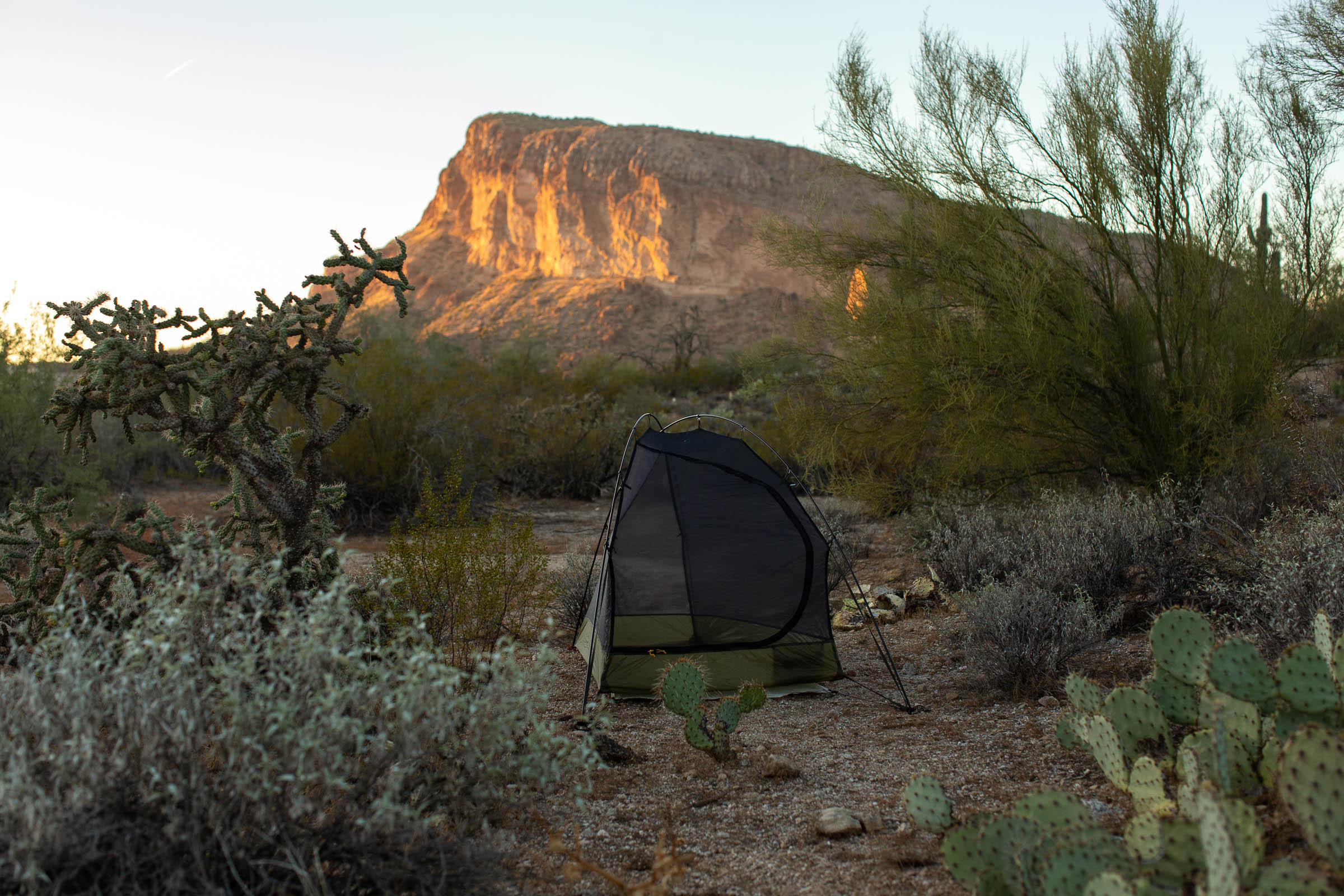
If you’re like me and prefer to sleep with at least partial protection from the outdoors, then the Soul has another trick up its sleeve. There are a handful of small velcro tabs on the inside of the fly that can be secured to the poles for better stability in windy conditions, or with just the two right above the door attached, the fly can be disconnected from the front corners and rolled back into what Big Sky calls their Moon Roof mode. This is great for warmer nights, star gazing, and lazy mornings in the tent. The excess fly fabric is then secured in place along the sides of the tent with a small elastic cord and plastic toggle.
In humid environments, with the fly zipped shut and vent propped open, there was often condensation build-up in the morning. I run warm at night, toss and turn a lot, and usually have to get out of bed a few times in the night to go to the washroom (goddamn Crohn’s), so anyone who’s less active in the night might have a better experience. On a more positive note, the lightweight fabrics dry out quickly.
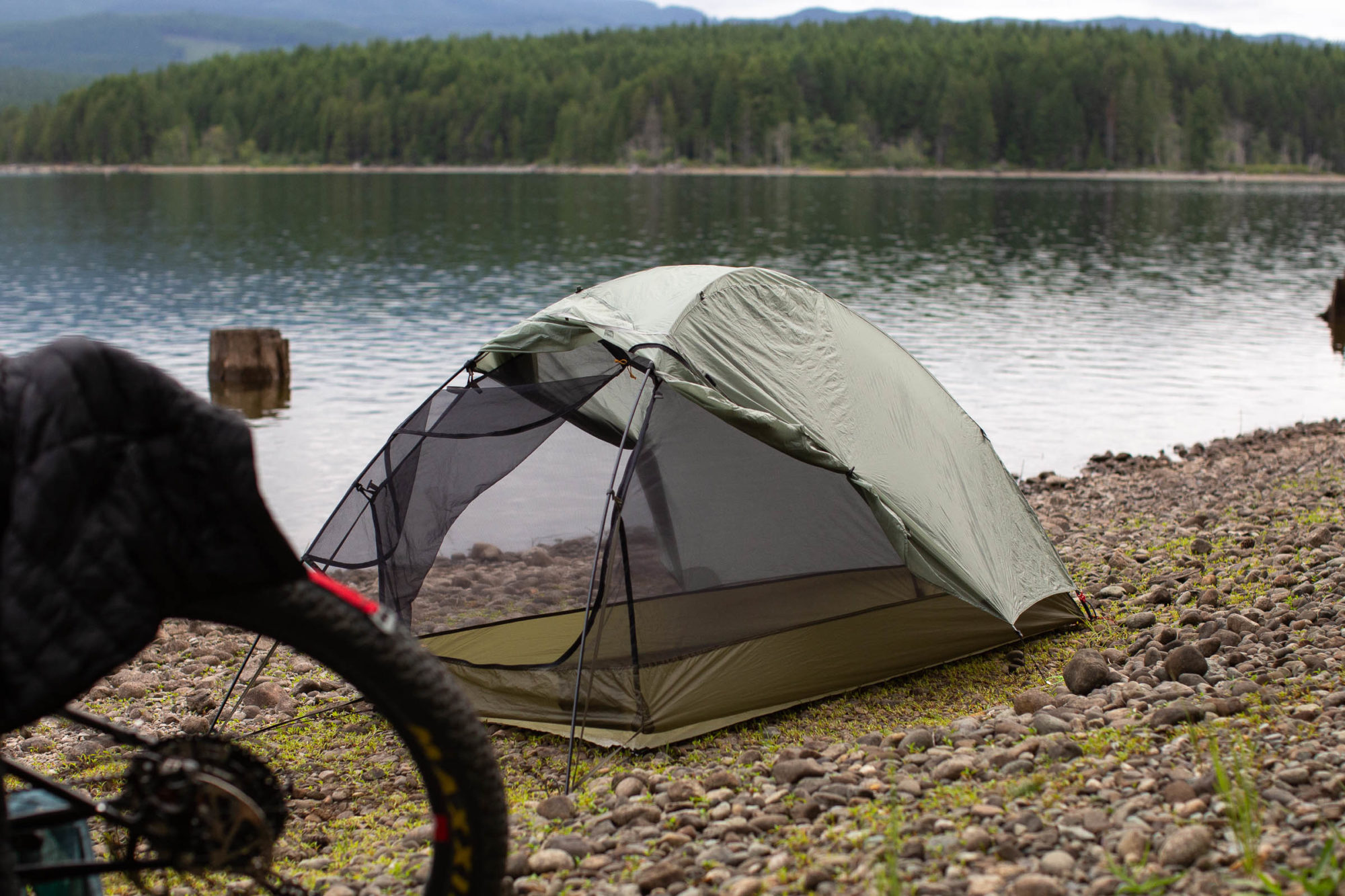
Design and Durability
While I’m a big fan of freestanding tents, I’m less of a fan of front-entrance tents like the Soul 1P. The zippered front entrance keeps the tent streamlined and minimal, but it can be a chore to get in and out. Getting in usually involved unzipping the door, turning around and sitting inside the tent backward, removing my shoes, rotating 180°, and getting into my sleeping bag. Since the high point of the tent is closer to the middle, and not the entrance, this leaves little room to manoeuvre.
On clear nights, I was happy to see that the fly didn’t interfere with the entrance to the tent but quickly realized that with the fly unzipped, the inside of the tent is completely exposed to whatever might be falling from the sky. When it’s raining, you’re forced to keep the fly partially closed while getting in and out of the tent, otherwise the area where your head lies gets wet. In my opinion, this is the biggest design flaw of the Soul. This is less of an issue with side-entrance tents like the the Big Sky Evolution 1P or the MSR Carbon Reflex 1 I reviewed a few years back.
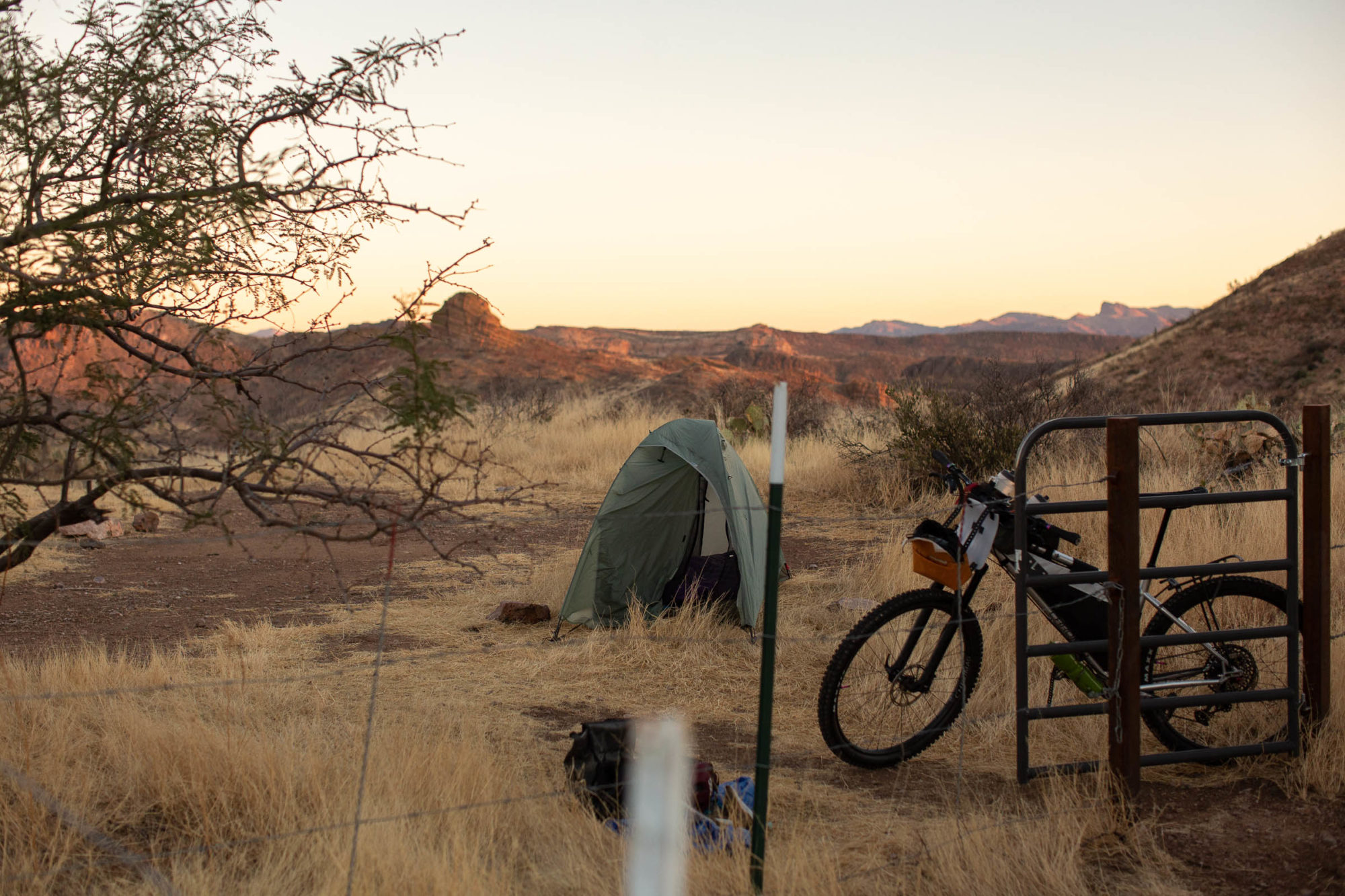
The Soul’s steep walls require extra attention in windy conditions. They catch the wind like sails and buckle the entire tent down on top of the user. Positioning the foot or head end toward the wind is your best bet, and using some of the extra guy line points when wind is expected is a good idea. Thankfully, I’ve had the tent fold right down on top of me a few times but the poles show no signs of bending or early wear.
Where I have seen some wear—and this is partly my fault—is the shock cord inside the pole segments. I made the mistake of packing the poles somewhat loosely, to the point where they were bouncing around inside my BXB Piccolo bag, and the shock cord actually wore through from the abrasion against the lip of the pole. It was simple enough to fix on the trail but could have made for an uncomfortable two weeks on the bike. The pole bag itself is also riddled with small holes from shifting around inside my bags, so I’ve started packing them inside the tent body to limit vibration.
Otherwise, the Soul has proven to be as durable as expected from a lightweight tent. If you’re mindful of where you set it up, use the optional groundsheet, and stay away from prickly bushes, you probably won’t have any problems. If you’re the type of person who is hard on gear and prefers to sleep among the cacti, a lightweight silnylon tent might not be the best option for you.

The overall craftsmanship and attention to detail of the tent appear to be top-notch, with no small details that have me scratching my head. I’m happy that the tent comes ready to use right from Big Sky, with no seam sealing or custom guy line trimming required. Even the stakes available from Big Sky, particularly the Tube Steaks pictured above, have proven to be durable and useful in most surface types. The coiled zipper on the door isn’t the smoothest to operate, especially because of the uneven tension on the door, but I believe this creates some vertical space where the user’s head goes and is easy to get the hang of.
The full mesh body, lightweight floor, and fly all pack together into the provided ~8L stuff sack with lots of room to spare. On most trips, I opted to leave the stuff sack at home and simply compressed the tent body and fly down into a seat or handlebar dry bag, packing the poles and stakes separately. Fully compressed, the fabric portion and groundsheet can easily fit into a 4-5L dry bag, occupying an impressively small amount of bag space. For example, during a lightweight run down the Lower Sunshine Coast Bikepacking Route last summer, the tent and groundsheet took up only around half the space available in a medium Revelate Pronghorn dry (see photos below) bag, which is around 11L.
Pros
- Freestanding and double-wall design
- Lightweight and easy to pack down small
- Bikepacking-specific model with shorter pole segments is a nice touch
- Options for ventilation, including roof vent, guy lines, and the Moon Roof setup
- Stealthy finish to avoid unnecessary attention
- Competitively priced
Cons
- Steep walls don’t fare well in the wind
- Entrance is exposed to the elements with fly open
- Front entrance and limited head space isn’t the best for us tall folks
- Lightweight components are somewhat fragile
- Interior Dimensions: 85″ x 36″/24″ (length x width)
- Interior Peak Height: 39″ (99cm)
- Actual Weight: 1079 grams (2.3 pounds) Body, Fly, Poles, and Stuff Sacks
- Place of Manufacture: Asia
- Price: $280 USD
- Manufacturer’s Details: BigSkyInternational.com
Wrap Up
The Big Sky Soul offers some of the best value you can find in a freestanding, one-person tent. Aside from the exposed entrance, it has proven to be well-designed, reasonably durable, and almost perfect for solo bikepacking trips. There’s a reason why it was awarded a top pick spot in our 2021 Bikepacking Gear of the Year Awards. Big Sky joins a few other brands, including Big Agnes and Nemo, that are offering bikepacking-specific versions of some of their more popular tent designs, which is exciting to see.
It’s worth noting that the Big Sky Soul is currently being updated but, like a lot of things these days, production has been delayed. I contemplated holding off on publishing this review until the new model was released but decided a thorough review of a brand we haven’t covered here before was still relevant, and I’ve been told the updates are minor. We have plans to get our hands on the latest and greatest when it’s available, so I’ll be sure to hold onto the tent for a detailed comparison.

Related Content
Make sure to dig into these related articles for more info...
Please keep the conversation civil, constructive, and inclusive, or your comment will be removed.













